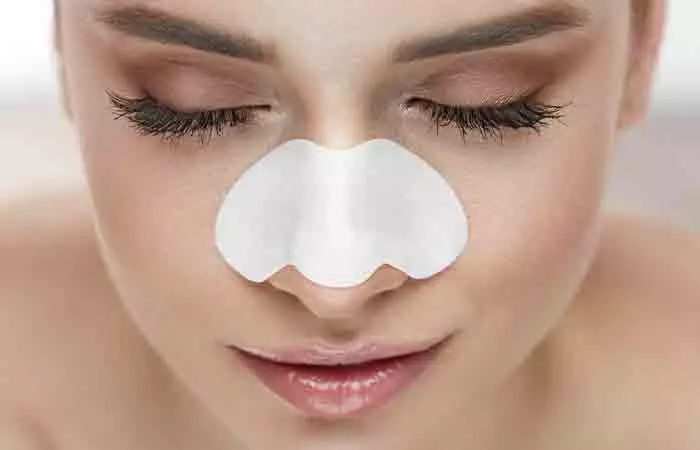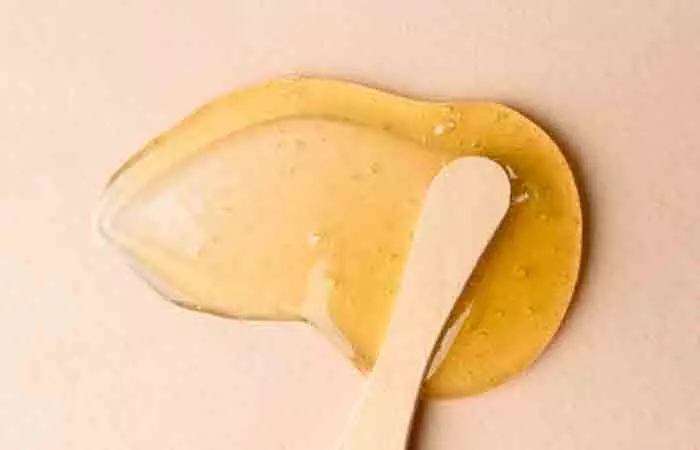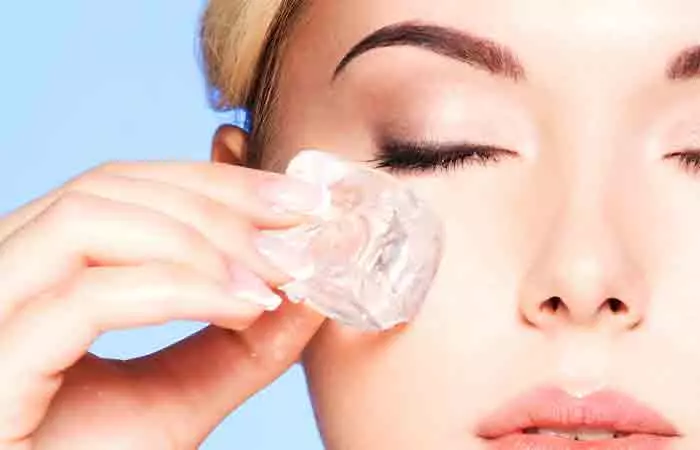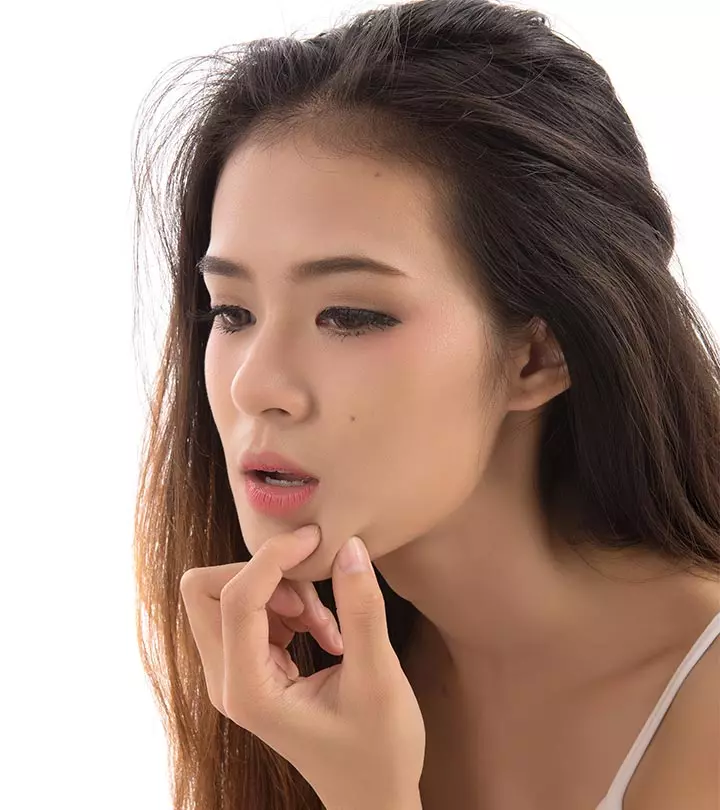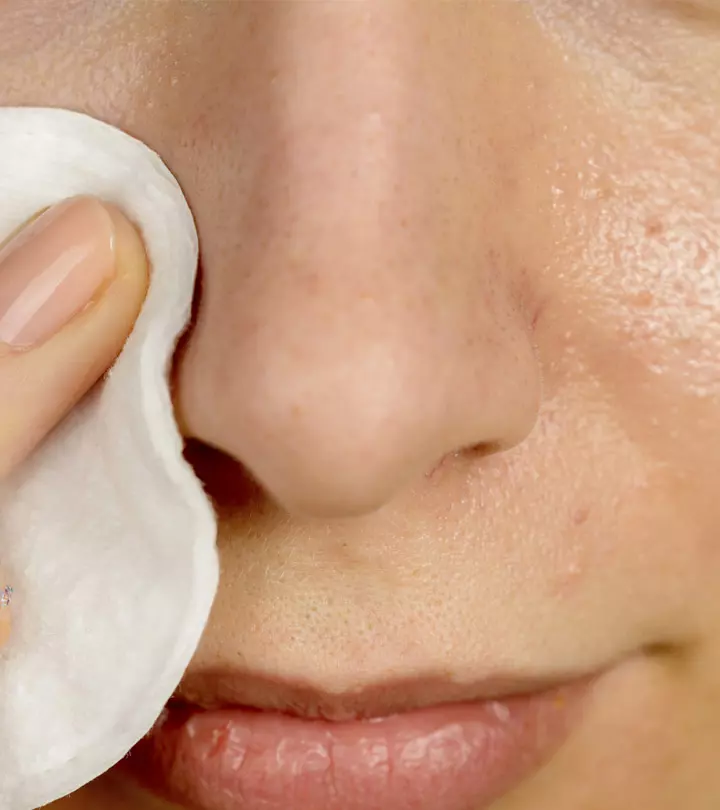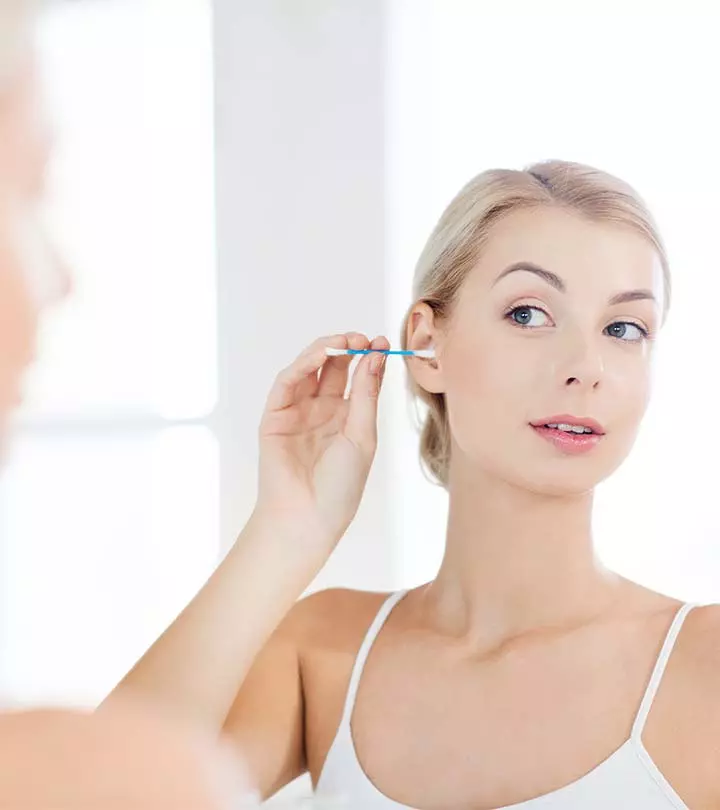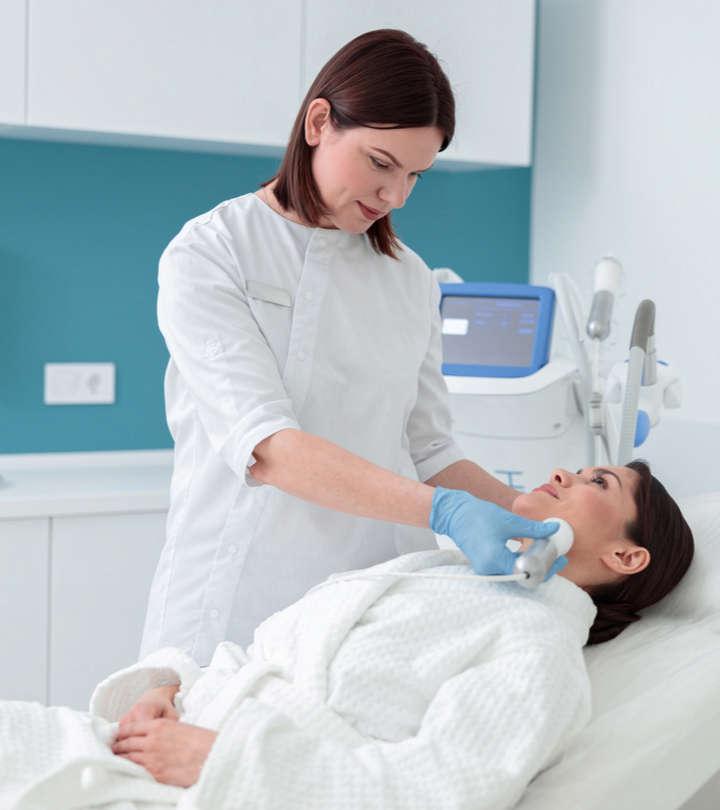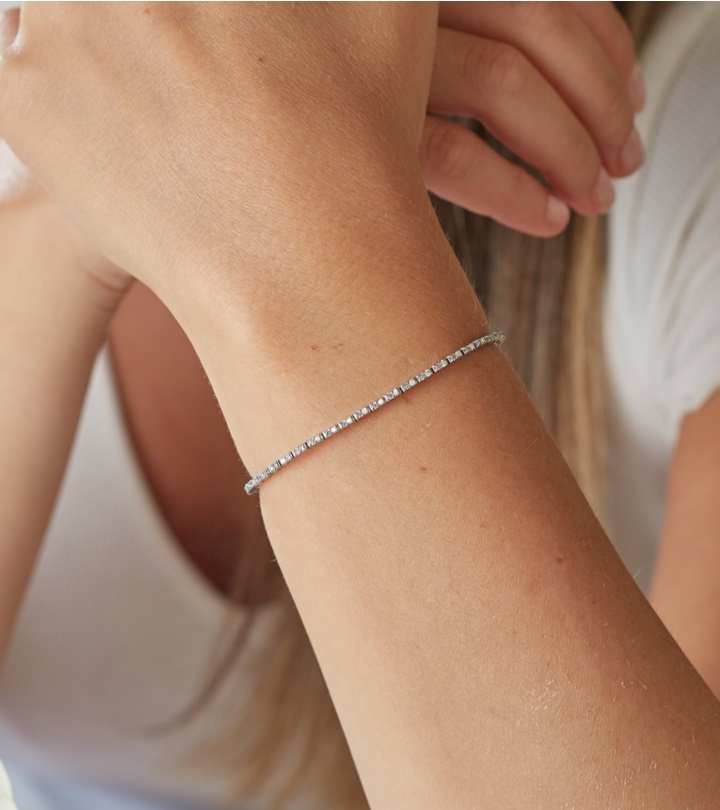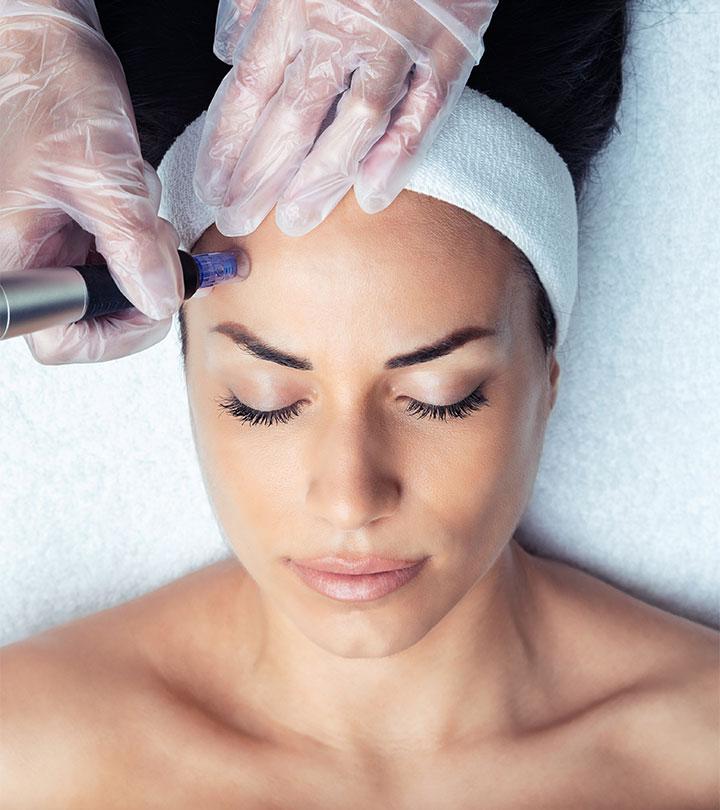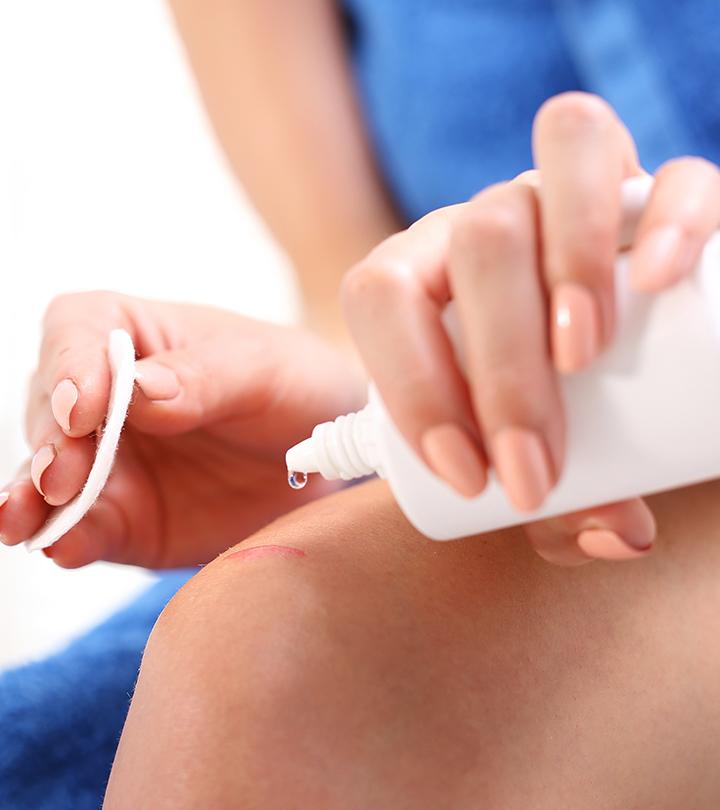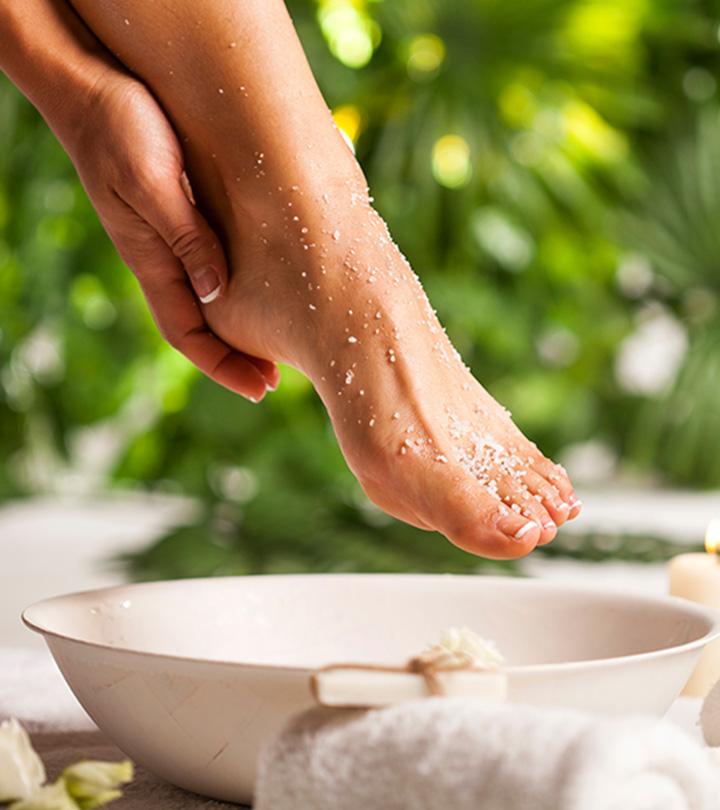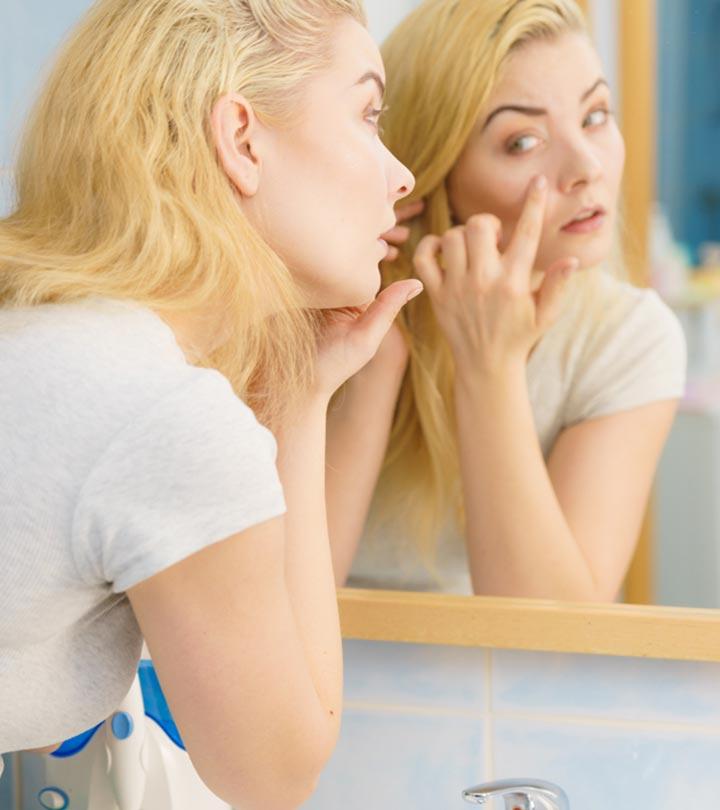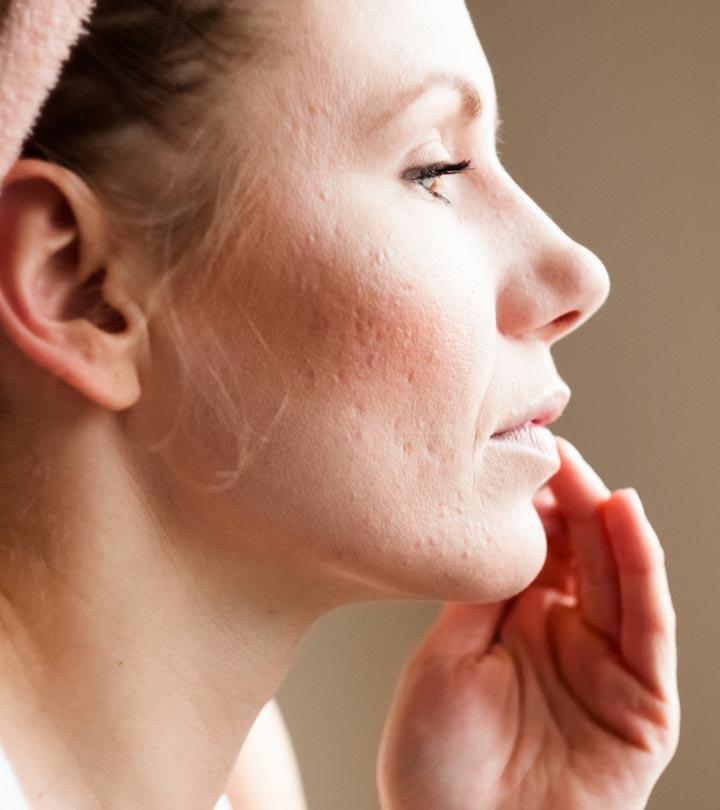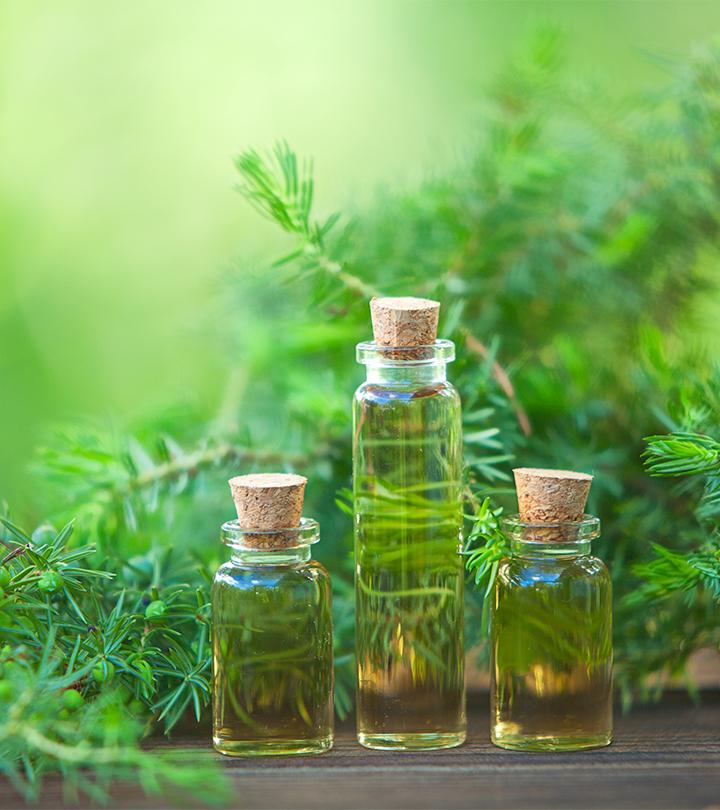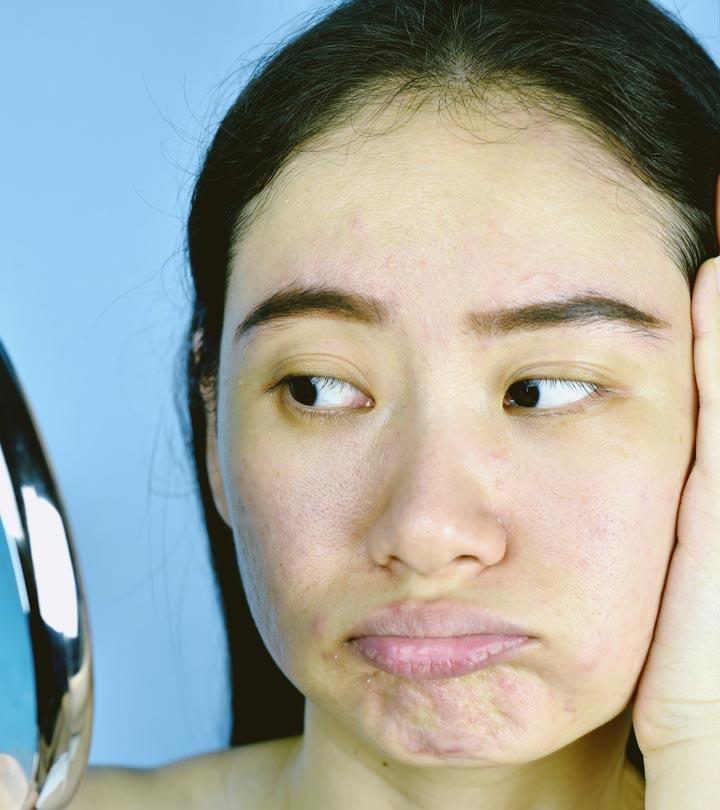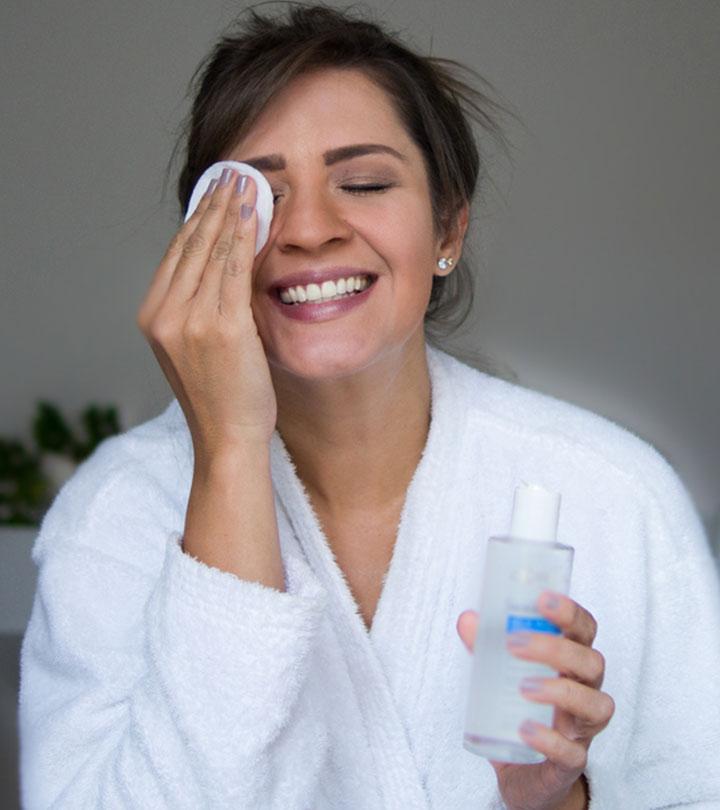How To Make Pore Strips At Home
Remove blackheads with honey, baking soda, and more without spending big bucks at salons.
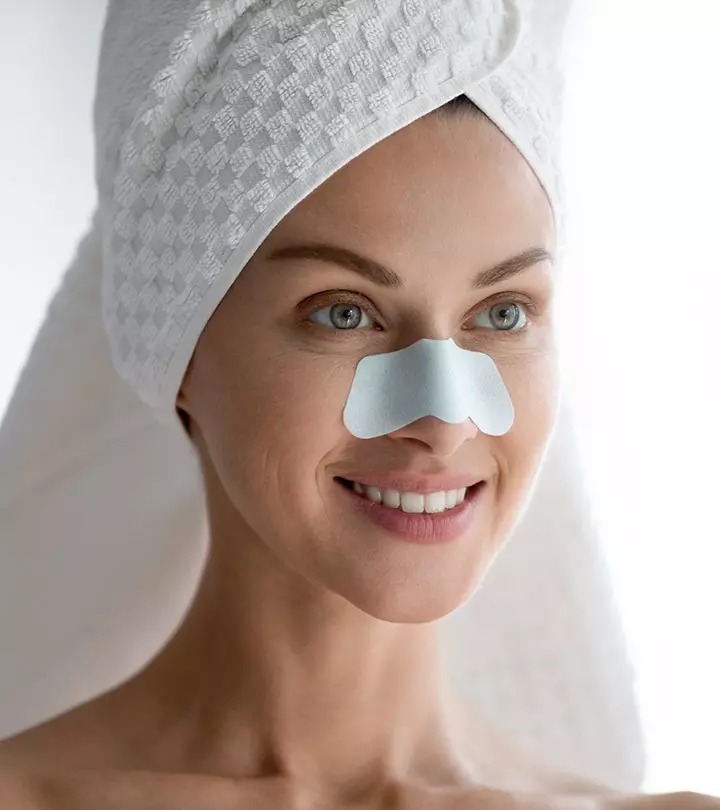
Image: Shutterstock
Pore strips have become a popular way to get rid of blackheads. They remove dirt, makeup residue, and blackheads from the skin’s surface, giving it a smooth and flawless look. But have you ever tried making DIY pore strips at home? After all, the store-bought pore strips do not deep-clean your pores and fail at removing blackheads completely. Their sticky synthetic materials can also be unpleasant sometimes. And, if you use them regularly, they can be expensive too. As an alternative, you can easily make pore strips at home using natural ingredients. Keep reading to find out how to make DIY pore strips at home, as well as recipes to avoid, tips for aftercare, and more. Scroll down!
In This Article
Do DIY Pore Strips Work?
Homemade pore strips operate similarly to the ones from stores. They clear your pores of the debris, oil, and dead skin cells clogging them. However, no research studies have been conducted to back these claims.
The following are some of the reasons why DIY pore strips are preferable:
- Homemade pore strips cover your entire face.
- They are an inexpensive alternative to drugstore pore strips.
- Their ingredients are all-natural.
- They do not contain any artificial components like chemicals and fragrances.
Now that you know why many people prefer homemade pore strips, check out the next section to learn how to make them.
DIY Pore Strips To Get Rid Of Blackheads
1. Egg White Pore Strips
Egg whites are said to tighten your pores temporarily. They minimize the probability of new blackheads formation and remove the existing ones. They are also nutrient-dense and less abrasive. Egg whites may also help in removing the dead skin cells clogging your pores. However, there is no scientific proof to back these claims.
What You Need
- 1 egg white
- A paper towel
- A bowl
What To Do
- Cleanse and wipe your face dry.
- Crack the egg open and separate the egg white from the yolk in a bowl.
- Apply a layer of egg white to your skin, paying extra attention to the areas with blackheads.
- Place a paper towel on the egg white mask. Gently press it down so that it sticks in place. Let it dry.
- Remove the paper towel after 20 minutes and wash your face with cool water to remove the egg white residue.
- Apply moisturizer after patting your face dry.
 Quick Tip
Quick Tip2. Sugar And Honey Strips
Honey preserves the skin’s moisture and softens it (1). Sugar’s abrasive texture acts as a natural exfoliator and is a great natural self-care ingredient for your skin. When these two ingredients are combined, they may form an effective pore strip.
What You Need
- 3 tablespoons of granulated sugar
- 2 tablespoons of honey
What To Do
- Add the granulated sugar and honey to a small pan.
- Heat the pan for a few minutes.
- Once the ingredients have blended, allow the mixture to cool down for some time.
- Apply the mixture to the skin and leave it on for at least 15 minutes to harden.
- Gently peel off the mixture.
- Wash your face and pat it dry.
- Apply your preferred moisturizer.
3. Baking Soda Strips
Baking soda is claimed to be an effective skin exfoliant for blackheads. However, it has the potential to dry out your skin, which may cause irritation and rashes. Also, there is not much research on the impact of baking soda on the skin.
What You Need
- ½ tablespoon of baking soda
- ½ cup lukewarm water
- A paper towel
- A bowl
What To Do
- Mix the baking soda and lukewarm water in a bowl.
- Fold a one-ply paper towel in half and dip it into the mixture.
- Squeeze out the extra water from the paper towel and spread and apply it to your nose, chin, or forehead.
- Leave it on for at least 10-15 minutes or until it dries up.
- Peel off the paper towel.
- Remove any excess residue with water and pat your face dry.
4. Gelatin Pore Strips
This recipe uses gelatin to help simulate the sticky sensation and peel-off action of store-bought pore strips. Milk may help moisturize the skin.
What You Need
- 1 tablespoon of gelatin powder
- 1 tablespoon of milk
- A bowl
What To Do
- Wash your face to remove all dirt and grime.
- In a bowl, combine equal parts gelatin powder and milk. Stir it until the gelatin is dissolved and a thick liquid forms. Use warm milk or microwave the mixture for around 20 seconds.
- Allow the mixture to cool down before applying it to your face.
- Apply the paste to the regions of your face where you wish to get rid of blackheads. Allow it to dry completely.
- Starting from one corner, gently peel off the mask to remove it.
- Wash your face with water.
 Quick Tip
Quick Tip5. Honey And Cinnamon Strips
Honey has antioxidant, antifungal, and antibacterial properties (1). Cinnamon may help tighten pores while also hydrating the skin, though there is no scientific evidence to prove the same. This mixture may help you get rid of blackheads while leaving you with healthy skin.
What You Need
- Honey
- 1 teaspoon cinnamon powder
- Cotton strips
- A bowl
What To Do
- Mix the honey and cinnamon powder into a paste in a bowl.
- Apply this mixture to the affected region and cover it with a cotton strip. Leave it on for 5 minutes.
- Remove the cotton strip and wash your face with cold water.
- After that, apply a moisturizer to your skin.
Note: Avoid your brows, hairline, and any part of the skin that is sensitive when applying these home remedies. Also, do a patch test on your forearm before applying these DIY pore strips to your face. Avoid using them on inflamed, swollen, or irritated skin.
Sanaa Khan, a blogger, tried out three different DIY pore strips that worked wonders for her. She used milk and gelatin, honey and baking soda, and egg whites to get rid of blackheads and whiteheads that form over the nose. She said, “I’ve often found myself left with scars and redness that take more than a couple of days to settle down.” She preferred using natural ingredients over store-bought pore strips to avoid any redness (i).
After using these DIY pore strips, follow the aftercare tips given below to nourish and protect your skin.
Aftercare Tips
- Aftercare involves icing and toning the skin. Rub an ice cube all over the affected area after using a DIY beauty product like pore strip to close your pores. If you are not comfortable with ice cubes, you can use cold water.
- Once that, you can resume your normal skin care routine, such as using sunscreen or moisturizer.
- If your skin is oily, make sure to exfoliate once a week. Including this step in your skin care routine will help to ensure that your skin is clear, smooth, and clean.
Cassandra Bankson, a skin care expert and medical esthetician, adds, “Make sure you are protecting the skin! A good serum, such as one containing salicylic acidi A natural odorless compound with anti-inflammatory properties that are used to treat acne, dandruff, and other common skin conditions. , can prevent blackheads and acne from reappearing and prevent those pores from “filling up” with more sebum/oil as quickly. Afterward, be sure to use sunscreen. Pore strips are exfoliating, and you definitely don’t want to do this before you go outside or sit in front of a window. Protect your nose with sunscreen as this is a common area that skin cancer can form, and remember that exfoliation should always be followed up with protection.”
Read below for a few side effects of pore strips before you embark on its use.
Side Effects Of Pore Strips
While an effective method to remove blackheads and unclog pores, pore strips can cause potential side effects:
- Skin Irritation: Certain ingredients in DIY strips may cause skin irritation, redness, or inflammation, especially if they are not diluted properly.
- Tearing Of Skin: Improper removal can potentially cause the skin to tear, leading to minor injuries or skin damage.
- Breakouts Or Acne: If strips are not properly prepared or removed, they may cause breakouts or aggravate existing acne, especially if they clog the pores or cause inflammation.
- Dryness: They may strip the skin of its natural oils, especially if it is already prone to dryness, or if the strips are used excessively.
- Allergic Reactions: You may be allergic to specific natural ingredients in DIY pore strips, leading to allergic reactions such as hives, redness, or swelling.
Some household ingredients can irritate your skin by being abrasive. Let’s learn about them in detail in the next section.
DIY Treatments For Blackheads To Avoid Altogether
1. Toothpaste
Toothpaste is a well-known hack for removing blackheads. It may contain some blackhead-fighting components. But it also has unpleasant compounds that can irritate the skin. Dermatologists do not recommend using toothpaste to eliminate blackheads because it can seriously irritate and damage your skin.
2. Glue
The stickiness of glue imitates the sticky nature of traditional pore strips. However, it is not safe for human skin. It may clog your pores even more. Glue can get attached to not only your blackheads but also the natural sebum and moisture and strip them away from your skin, thus drying it out.
3. Duct Tape
Most people use duct tape for its adhesive properties to remove blackheads. However, skin care professionals strongly advise against using tape on the skin. Apart from failing to remove blackheads, it may further aggravate your skin.
Infographic: How To Make DIY Pore Strips To Get Rid Of Blackheads
If your nose feels lumpy and greasy even after exfoliating your face completely, then pore strips are your best shot at unclogging your pores and getting the gunk out. Homemade pore strips are safe, quick, and efficient ways to get rid of blackheads. Check out the infographic below if you want to make your own pore strips for a smooth and clean nose. Illustration: StyleCraze Design Team
The Final Takeaway
Pore strips are among the most popular and effective blackhead removal treatments available today. These strips stick to comedones and pull them off as you peel them. Homemade pore strips are one of the best natural remedies that you can include in your skincare routine. Using these strips is one of the best beauty hacks alternative to applying commercial beauty products. This homemade beauty remedy is natural, quick and effective to eradicate blackheads. However, they should be used with caution. Test them on your forearm before applying them to your face. Discontinue using them if you see any signs of inflammation.
Frequently Asked Questions
Should you squeeze sebum out of pores?
No. Never try to squeeze sebum out of your pores because it can injure your skin and increase the risk of scarring.
When I squeeze my nose pores why does white stuff come out?
This white stuff is called a sebaceous filament that comprises sebum, dead skin cells, and dirt. It is best not to squeeze them out as that may scratch and injure the skin.
What can I use instead of nose pore strips?
You can use peel-off facial masks, gels, or cleansing face washes containing salicylic acid, which will penetrate deep into the pores and unclog them, helping with pore cleansing efficiently.
Why you shouldn’t use pore strips?
Despite all their benefits, pore strips can be damaging for sensitive, thin skin. They hurt your skin and can even pull out your skin and facial hair when used excessively.
How often should you use nose strips?
Limit the use of nose strips to once per week. Pore strips can be abrasive when overused and can cause redness and irritation.
Key Takeaways
- Homemade pore strips can clear skin pores of debris, oil, and dead skin cells clogging them.
- Gelatin pore strips use gelatin to simulate the sticky sensation and peel-off action of store-bought pore strips.
- Skin care professionals strongly advise against using duct tape on the skin for removing blackheads.
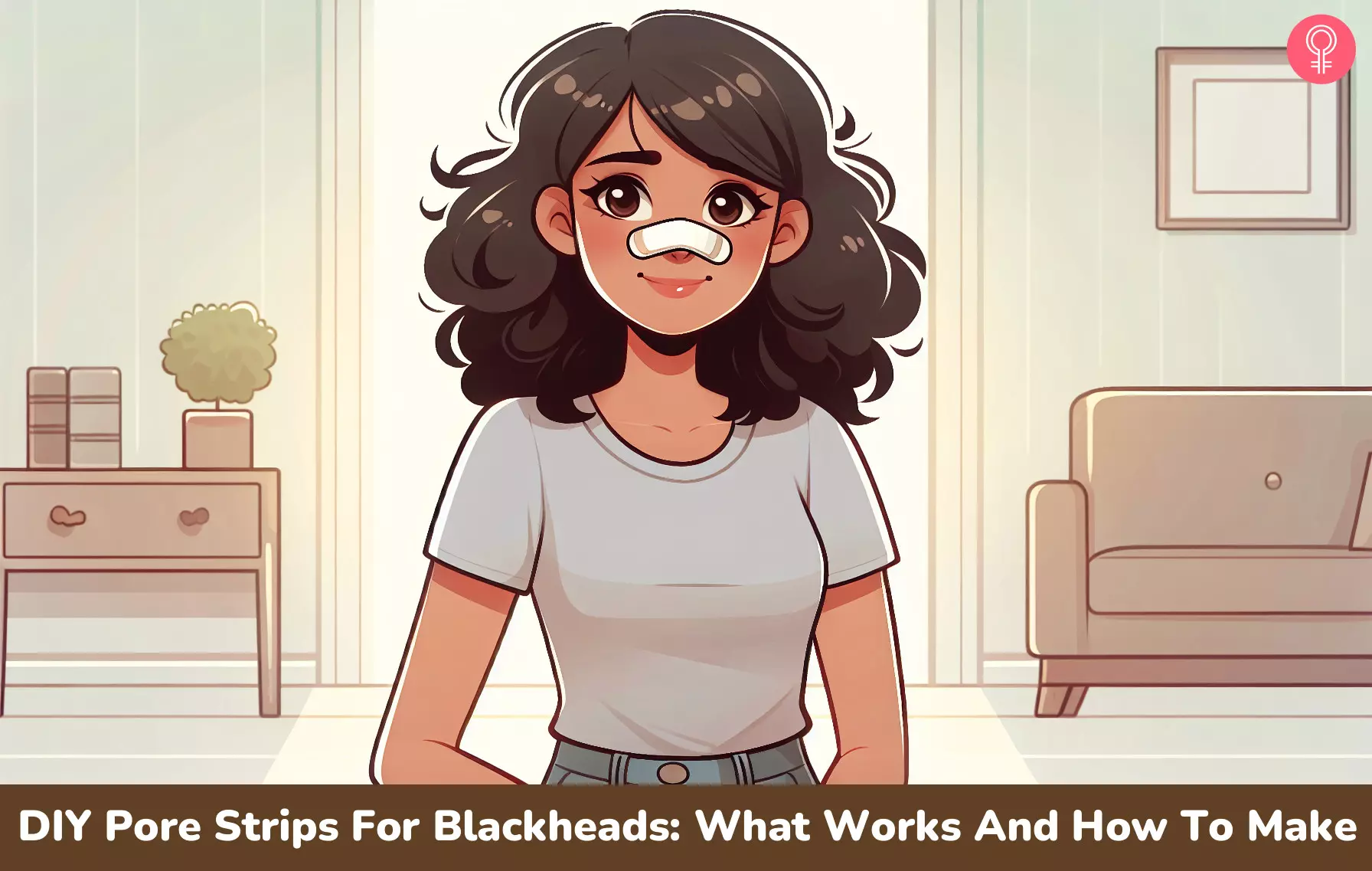
Image: Stable Diffusion/StyleCraze Design Team
Learn how to make DIY blackhead strips that actually work! Check out this video and get rid of those pesky blackheads with this easy and effective tutorial.
Personal Experience: Source
StyleCraze's articles are interwoven with authentic personal narratives that provide depth and resonance to our content. Below are the sources of the personal accounts referenced in this article.
i. DIY Pore Strips That Actually Work…https://medium.com/@sanaak/diy-pore-strips-that-actually-work-c38d9cd59a9b
References
Articles on StyleCraze are backed by verified information from peer-reviewed and academic research papers, reputed organizations, research institutions, and medical associations to ensure accuracy and relevance. Read our editorial policy to learn more.
- Honey in dermatology and skin care: a review
https://pubmed.ncbi.nlm.nih.gov/24305429/
Read full bio of Dr. Zeel Gandhi
Read full bio of Anjali Sayee
Read full bio of Swathi E





